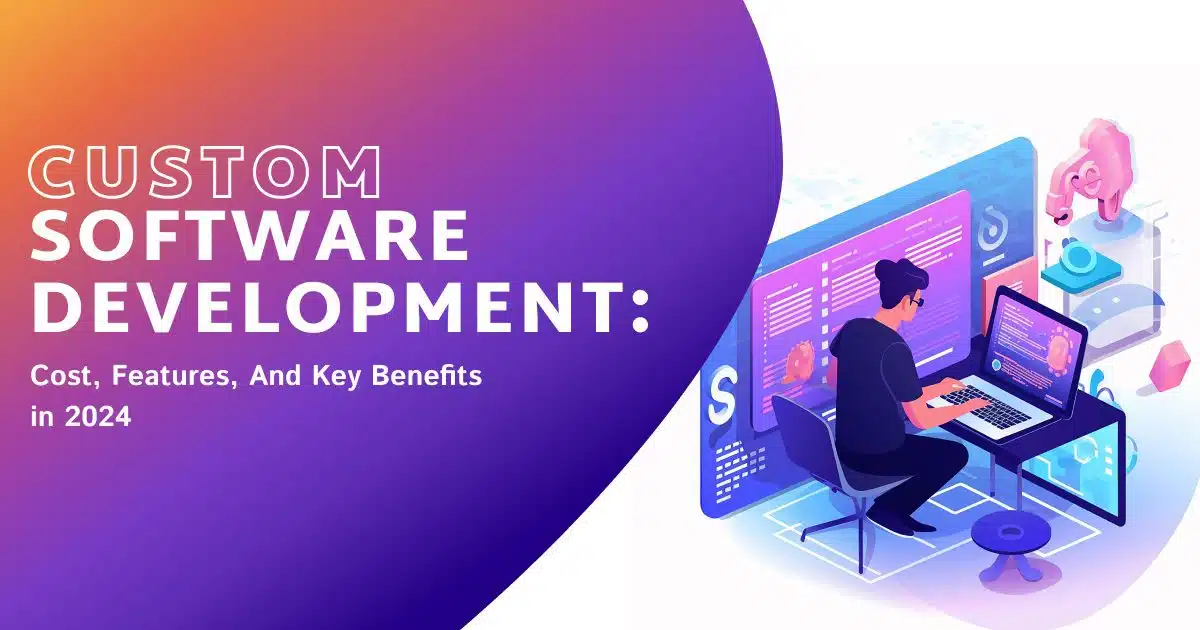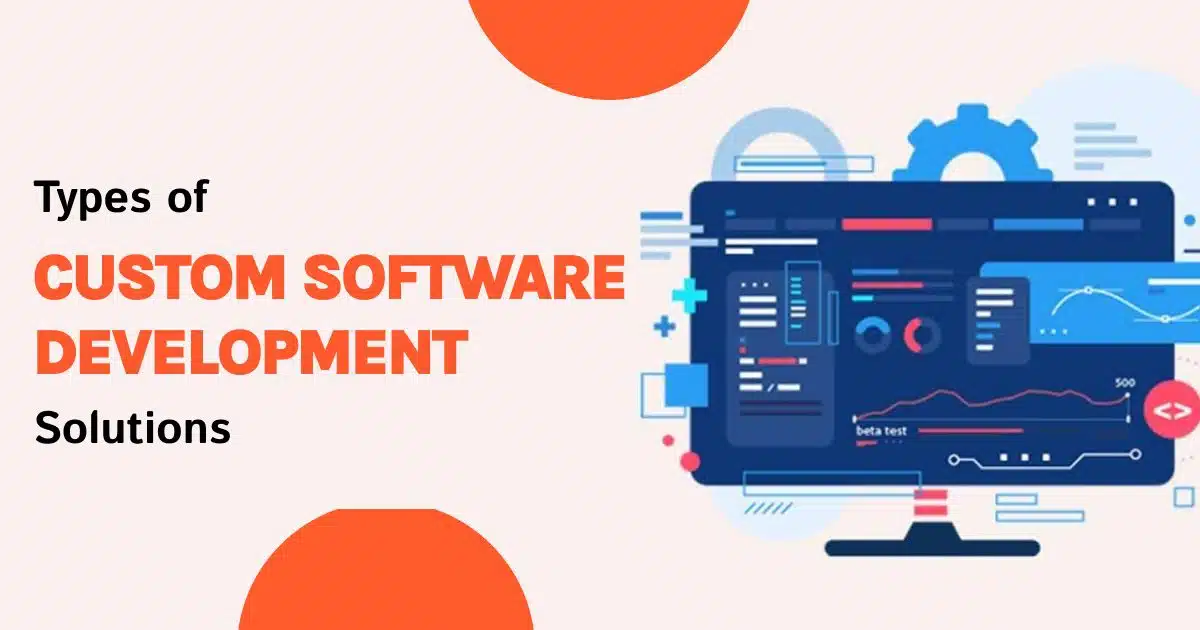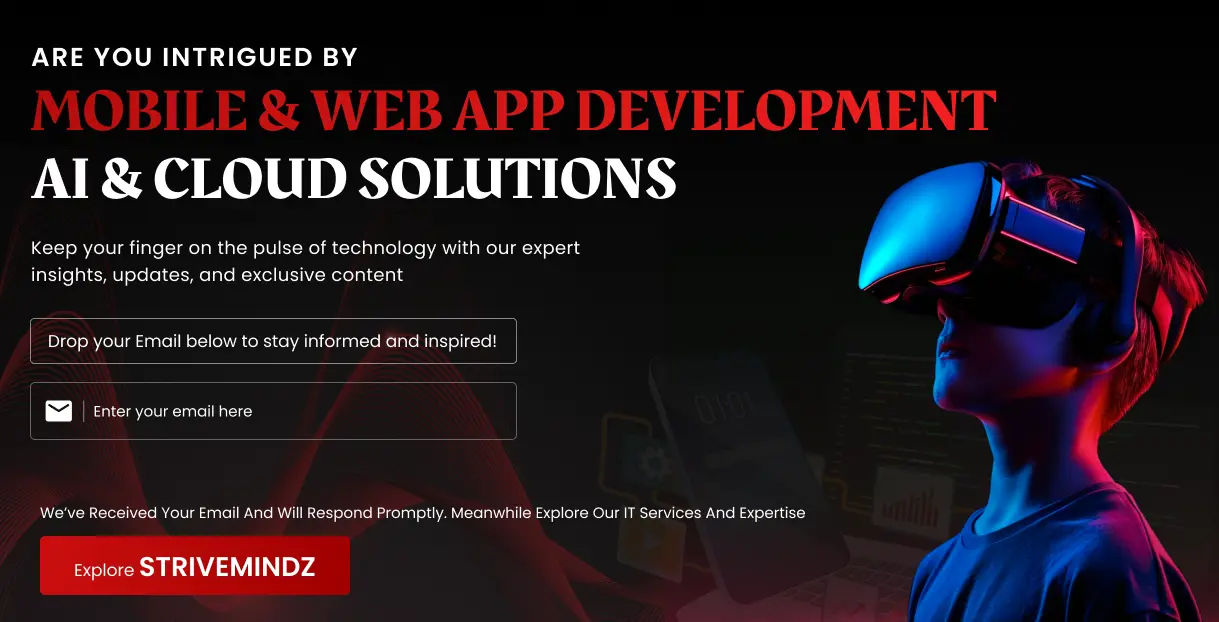Custom Software Development: Cost, Features, And Key Benefits in 2024

In 2024, the digital revolution continues to evolve, making custom software development an indispensable asset for businesses seeking innovation, agility, and competitive advantage. Since businesses have increasingly invested in differentiated digital solutions to gain competitive advantages, custom software development has experienced tremendous growth.
Over the past decade, custom software development has witnessed explosive growth. Companies are increasingly investing in unique digital tools to stand out from the crowd. A 2023 Clutch survey revealed a dramatic rise in custom software usage, with over 83% of companies leveraging it, compared to just 62% in 2018.
The global custom software market, valued at over $180 billion according to Research And Markets, is booming at a staggering 11.8% annually. This surge reflects a fundamental need for tailored solutions that perfectly address specific workflows, security demands, integration needs, and future scalability.
As we enter 2024, custom development is poised to disrupt entire industries by empowering companies with hyper-focused software solutions. This comprehensive guide delves into the core of custom software development, exploring its numerous benefits, strategic significance, and how it aligns perfectly with the needs of modern businesses.
What is Custom Software Development?
Custom software development is the process of creating software applications that are specifically designed to meet the unique needs of a particular business or organization. Unlike off-the-shelf software, which is designed for a general audience and has a set of predetermined features, custom software is built from the ground up to address the specific challenges and workflows of a single user or organization.
Here’s a breakdown of the key concept:
- Uniquely Tailored: Custom software caters to the specific needs of a business, integrating seamlessly with existing systems and addressing its particular pain points.
- Addressing Challenges: Whether it’s automating complex tasks, streamlining data management, or creating a platform for improved communication, custom software solves problems specific to the business.
- Flexibility and Scalability: Custom software can be designed to adapt and grow alongside the business, accommodating future changes and increasing demands.
In essence, custom software development allows businesses to leverage technology as a strategic tool to achieve their unique goals and gain a competitive edge in the marketplace.
Types of Custom Software Development Solutions
There are various categories of custom software development solutions, each catering to specific business needs. Here’s a breakdown of some common types:
- Enterprise Resource Planning (ERP) Systems: ERP software integrates core business functions like accounting, inventory management, human resources, and customer relationship management (CRM) into a single system, offering a centralized platform for managing all aspects of a business.
- Customer Relationship Management (CRM) Systems: CRM software helps businesses manage interactions with customers and potential customers. It streamlines processes for tasks like lead generation, sales pipeline management, and customer service, fostering stronger relationships and boosting sales.
- Content Management Systems (CMS): A CMS empowers users to create, edit, and publish content on a website or web application without extensive coding knowledge. This is ideal for businesses that need to regularly update their website with fresh content like blog posts, product descriptions, or news announcements.
- E-commerce Software: E-commerce platforms facilitate online sales, allowing businesses to create a storefront, manage product listings, process payments securely, and fulfill customer orders.
- Operations Management Systems: These solutions help businesses streamline operational processes, improve efficiency, and optimize resource allocation. They can encompass functionalities like project management, task scheduling, inventory control, and supply chain management.
- Industry-Specific Solutions: Custom software can be tailored to address the specific needs of a particular industry. For example, a healthcare provider might develop software to manage patient records and appointments, while a manufacturing company might create a solution to optimize production lines and track inventory levels.
- Mobile Applications: Custom mobile apps can be developed to enhance customer engagement, provide on-the-go access to services, or improve internal communication within a business.
This is not an exhaustive list, but it showcases the versatility of custom software development. By understanding the different types of solutions available, businesses can determine the approach that best aligns with their unique goals and requirements.
What is The Difference Between Off-The-Shelf and Custom Software?
It is a common question for software companies whether they should build customized software or get off-the-shelf solutions.It is important to establish a complete picture of what a business needs from its software, as well as the total cost of ownership associated with all options. In choosing between customized or off-the-shelf software, an organization should consider the following points.
- Identify the problem space and understand it
- Consider all options and know their total cost
- Make sure you know what the product is and who makes it
- Make sure you understand the security requirements
- A perfect fit exists between the Company’s solutions and the needs of the client
Unlike off-the-shelf software, custom software is made according to the company’s way of doing business, rather than being readily available and not customized. As there will be many unused features in off-the-shelf software, it will often fall short of meeting specific requirements. This is where Custom Software Development Services are needed, which require a company to develop applications that meet our needs. Business needs are met by custom software, whereas off-the-shelf software requires your company to adapt to its capabilities.
Here’s a breakdown of the key differences between off-the-shelf and custom software:
Off-the-Shelf Software:
- Ready-made solution: Developed for a general audience with a predetermined set of features. Think of it like buying a pre-built suit; it may fit well for many people, but it won’t be perfectly tailored.
- Cost-effective: Generally less expensive than custom software due to the economies of scale achieved by serving a broader market.
- Faster Implementation: Since the software is already built, implementation time is typically quicker compared to custom development.
- Limited Flexibility: Features and functionalities are fixed, so you may need to adapt your workflows to fit the software’s capabilities.
- Security Concerns: Security updates and features may depend on the vendor’s release schedule, potentially leaving you vulnerable if they don’t align with your specific needs.
Custom Software:
- Tailor-made solution: Designed and built specifically to meet the unique needs and workflows of a particular business. Imagine a custom-made suit; it provides a perfect fit and caters to your specific style and requirements.
- Higher Investment: Custom development involves time and resources, making it a more significant investment compared to off-the-shelf solutions.
- Longer Development Time: Building software from scratch takes time, so implementation timelines are typically longer than off-the-shelf options.
- Increased Flexibility: The software is built to your exact specifications, offering complete control over features and functionalities.
- Enhanced Security: Security measures can be implemented to meet your specific needs and compliance requirements.
Choosing Between Off-the-Shelf and Custom software:
The decision between off-the-shelf and custom software hinges on your specific business requirements. Here are some factors to consider:
- Budget: If you have a limited budget, off-the-shelf software might be a more viable option.
- Complexity of Needs: For complex workflows or unique data requirements, custom software might be necessary for optimal functionality.
- Scalability: Consider future growth plans. If you anticipate significant expansion, custom software can be designed to scale alongside your business.
- Security Requirements: If your business handles sensitive data, custom software can provide a higher level of security control.
By carefully evaluating your needs and priorities, you can make an informed decision about which software development approach best positions your business for success.
Advantages of Custom Software Development For Business in 2024
You will not only be able to fashion a solution specific to your business needs with the software, but you will also be able to increase your efficiency and productivity as well. That’s pretty interesting, isn’t it? We’ve only scratched the surface here! Would you like to know what your organization can expect? Continue reading…
Now, let’s revisit the compelling benefits custom software development offers businesses, solidifying the case for why it might be the ideal path for your organization:
Enhanced Efficiency and Productivity
Custom software streamlines workflows, automates repetitive tasks, and centralizes data, empowering your employees to focus on higher-value activities. This translates to increased efficiency, improved productivity, and the ability to accomplish more in less time.
A Perfect Fit for Your Business
Unlike off-the-shelf software with its generic features, custom software caters precisely to your unique needs and workflows. It seamlessly integrates with your existing systems, eliminating the need to adapt your processes to fit the software’s limitations.
Scalability and Future-Proofing
Custom software can be designed with scalability in mind. As your business grows, the software can adapt and expand to accommodate increasing user bases, data volumes, and evolving requirements. This future-proofs your investment and ensures your software remains relevant as your business thrives.
Competitive Advantage
In today’s dynamic marketplace, differentiation is key. Custom software empowers you to create a unique solution that sets you apart from competitors. It can offer superior user experiences, address specific customer pain points, or automate functionalities that give you a strategic edge.
Data-Driven Decision Making
Custom software can provide real-time access to valuable data and analytics. This empowers you to make informed decisions based on accurate and up-to-date information, leading to improved strategies, optimized resource allocation, and overall better business outcomes.
Improved Customer Experience
Custom software can elevate the customer experience by providing features and functionalities that cater directly to your target audience’s needs. This could involve personalized interactions, streamlined customer support channels, or self-service options that empower customers and foster loyalty.
Enhanced Security
With custom software, you have complete control over the security measures implemented. This allows you to address your specific security requirements and data privacy regulations, ensuring the protection of sensitive information.
Integration with Existing Systems
Custom software can be designed to integrate seamlessly with your existing systems and applications, eliminating data silos and streamlining information flow across your organization. This fosters better collaboration, improves data accuracy, and maximizes the value of your existing technology investments.
Long-Term Return on Investment (ROI)
While the initial investment in custom software development might be higher than off-the-shelf solutions, the long-term benefits often outweigh the costs. Increased efficiency, improved productivity, and a competitive advantage can lead to significant ROI over time.
Ownership and Control
With custom software, you own the intellectual property and have complete control over the software’s functionality and future development. This empowers you to make modifications and enhancements as your business needs evolve, ensuring your software remains aligned with your strategic goals.
Read also: Nearshore Software Development: what is it and how does It work?
By carefully considering these advantages and aligning them with your specific business objectives, you can make an informed decision about whether custom software development is the right path to propel your organization towards success. Remember, a well-crafted custom software solution can be a powerful tool for gaining a competitive edge, optimizing operations, and driving sustainable growth for your business.
Building Your Dream: A Step-by-Step Guide to Build Custom Software Development
The prospect of custom software, a solution meticulously crafted to address your business’s unique needs, can be exhilarating. But transforming that vision into reality requires a well-defined roadmap. Here’s an 8-step guide to navigating the custom software development process from scratch:
Step 1: Define Your Needs and Goals:
- Unearth the pain points: Start by identifying the specific challenges and inefficiencies your business faces. What problems are you trying to solve?
- Envision the ideal solution: Clearly articulate the functionalities you envision in your custom software. How will it address your pain points and empower your team?
- Set SMART goals: Establish Specific, Measurable, Achievable, Relevant, and Time-bound goals for your software development project.
Step 2: Prioritize Features and Functionalities:
- Not all features are created equal: Create a prioritized list of functionalities, focusing on those that deliver the most significant impact on your goals.
- Start with a strong foundation: Prioritize core functionalities critical for day-to-day operations. Advanced features can be added later.
Step 3: Research and Choose Your Development Methodology:
- Waterfall vs. Agile: Waterfall offers a structured, sequential approach, while Agile emphasizes flexibility and iterative development.
- Align methodology with project needs: Consider the complexity of your project and your desired level of flexibility when choosing a methodology.
Step 4: Select the Right Development Partner:
- Experience and Expertise: Look for a development team with experience in your industry and a proven track record of successful custom software projects.
- Communication and Transparency: Choose a partner that prioritizes clear communication and fosters an open, collaborative environment.
- Project Management Skills: Ensure your development partner possesses strong project management skills to keep the project on track and within budget.
Step 5: Define the Project Scope and Requirements Document (PRD):
- A detailed roadmap: The PRD outlines the functionalities, technical specifications, and user stories for your software.
- Minimize ambiguity: A well-defined PRD minimizes misunderstandings and ensures everyone involved is on the same page.
Step 6: Development and Testing:
- The development phase: Your chosen development partner brings your vision to life, translating the PRD into functional software.
- Rigorous testing is crucial: Implement a comprehensive testing strategy to identify and rectify bugs before deployment.
Step 7: Deployment and User Training:
- Going live!: Your custom software is deployed and ready for use by your team.
- User training is key: Provide thorough training to ensure your team can leverage the software effectively and maximize its benefits.
Step 8: Maintenance and Ongoing Support:
- Software is a living entity: Regular maintenance ensures the software continues to function optimally and addresses any emerging issues.
- Plan for future enhancements: As your business evolves, consider ongoing development cycles to incorporate new features and functionalities.
By following these steps and maintaining a collaborative approach with your development partner, you can navigate the custom software development journey with greater clarity and confidence, ultimately transforming your vision into a powerful tool that propels your business forward.
How Much Does Custom Software Development Cost in 2024?
Predicting the exact cost of custom software development in 2024 is challenging due to the multitude of factors influencing the final price tag. However, we can explore some key considerations to provide a general range and guide you towards a more accurate estimate for your specific project.
Factors Influencing Cost:
- Project Complexity: The intricacy of features, integrations, and functionalities directly affects development time and resource allocation. Simple applications will naturally cost less compared to feature-rich, enterprise-level solutions.
- Team Structure: The experience and location of your development team significantly impact pricing. Hourly rates for developers can vary depending on their expertise and geographic location. Hiring a team of in-house developers with top-tier qualifications will incur a higher cost compared to outsourcing to a company with developers in a region with lower rates.
- Project Scope: Clearly defining the scope of your project upfront is crucial for cost management. A well-defined scope minimizes the risk of scope creep, which occurs when additional functionalities are added mid-development, leading to increased costs.
- Development Methodology: The chosen development methodology, such as Agile or Waterfall, can influence costs. Agile software development, with its iterative approach, allows for ongoing adjustments and can potentially lead to more cost-effective development.
Cost Estimates and Considerations:
- General Range: Custom software development projects can typically range from $120,000 to $220,000, with more complex solutions reaching upwards of $500,000. Remember, this is just an estimate, and it’s essential to get quotes from potential development partners based on your specific needs.
- Total Cost of Ownership (TCO): Consider the ongoing expenses like maintenance, upgrades, and potential infrastructure changes when evaluating costs.
- ROI Potential: While the initial investment might seem substantial, factor in the long-term return on investment (ROI) that custom software can generate through increased efficiency, improved productivity, and a potential competitive advantage.
Getting Accurate Estimates:
- Request for Proposals (RFPs): Issue RFPs to qualified development partners, outlining your project requirements and budget.
- Evaluate Proposals: Carefully assess proposals from potential partners, considering their experience, development methodology, and proposed costs.
By understanding these cost factors and taking a proactive approach to obtaining estimates, you can make informed financial decisions throughout the custom software development process. Remember, the cost should be viewed as an investment in the future growth and success of your business.
Size-based average custom software development costs
Software size is one of the most important factors affecting development costs.
A small-sized software could be a simple web application like a website for a small business or startup, whereas a large project could be enterprise software such as an HR management system or ERP.
The cost of software increases with the size of the program.
Depending on the size of the software, these are some average costs:
Small Projects ($20,000 – $50,000):
- Scope: Often web applications with basic functionalities or straightforward mobile apps with limited features.
- Examples: Internal tools for streamlining workflows, basic customer relationship management (CRM) systems, or mobile apps with core functionalities.
- Development Time: Typically involve shorter development cycles due to the streamlined nature of the project.
Mid-Sized Projects ($50,000 – $200,000):
- Scope: Encompass a wider range of functionalities compared to small projects. This category might include:
- E-commerce platforms with core features for product listings, shopping carts, and secure payment processing.
- Content Management Systems (CMS) enabling content creation and management for websites.
- More feature-rich mobile apps with additional functionalities.
- Development Time: Development timelines increase due to the greater complexity of features and functionalities.
Large-Scale Projects ($200,000+):
- Scope: Address complex business needs and involve a significant number of features and integrations. Examples include:
- Enterprise Resource Planning (ERP) systems that integrate various business functions like accounting, inventory, and human resources.
- Custom software solutions for specific industries, such as healthcare management systems or financial trading platforms.
- Highly scalable mobile apps that can handle large user bases and complex data operations.
- Development Time: These projects involve extensive development cycles due to their intricate nature and the need for rigorous testing and refinement.
Important Considerations:
- These cost ranges are estimates and can vary depending on factors like project complexity, team location, and development methodology.
- The cost can be influenced by additional features or functionalities added during development (scope creep).
- Remember to factor in ongoing costs like maintenance and potential infrastructure upgrades.
By understanding these cost ranges and project sizes, you can get a better sense of the potential investment involved in custom software development for your business. It’s crucial to discuss your specific needs with qualified development partners to receive the most accurate cost estimates. They can assess your project requirements and provide a tailored quote that reflects the scope, complexity, and development approach best suited for your unique situation.
Custom Software Examples That Have Been Successful In 2024
Here are a few examples of successful custom software across various industries:
Streaming Services (Entertainment):
- Examples: Netflix, Amazon Prime Video
- Impact: Custom streaming software allows these platforms to deliver high-quality video and audio content to users worldwide, ensuring a seamless viewing experience. This has revolutionized how people consume entertainment and has been a major disruptor in the traditional media industry.
Learning Management Systems (Education):
- Examples: Blackboard, Moodle, Canvas
- Impact: Custom learning management systems have transformed education by providing institutions with a platform to deliver online courses, manage student enrollment, and facilitate communication between instructors and learners. This has expanded access to education and created new possibilities for flexible learning models.
Electronic Health Records (Healthcare):
- Examples: Epic Systems, Cerner
- Impact: Custom EHR systems have significantly improved healthcare delivery by centralizing patient data, streamlining workflows for medical professionals, and enhancing patient care coordination. This has led to improved accuracy, efficiency, and overall quality of care.
Inventory Management Systems (Retail and E-commerce):
- Examples: Warehouse Management Systems (WMS), Order Management Systems (OMS)
- Impact: Custom inventory management systems empower businesses to track stock levels in real-time, optimize order fulfillment processes, and reduce the risk of stockouts. This translates to increased efficiency, improved customer satisfaction, and higher profitability.
Customer Relationship Management (CRM) Systems (Various Industries):
- Examples: Salesforce, HubSpot
- Impact: Custom CRM systems allow businesses to manage customer interactions effectively, track sales leads, and personalize marketing campaigns. This fosters stronger customer relationships, increases sales opportunities, and improves overall customer experience.
Financial Services Platforms (Banking and Finance):
- Examples: Online banking platforms, custom trading applications
- Impact: Custom software solutions in finance enable institutions to offer secure online banking services, facilitate mobile payments, and develop innovative financial products. This has improved accessibility to financial services, streamlined transactions, and driven growth within the financial sector.
These are just a few examples, and custom software development extends to a wide range of industries and applications. By tailoring software to their specific needs and challenges, businesses can gain a significant competitive advantage, improve operational efficiency, and achieve their strategic goals.
How Can Strivemindz Help with Custom Software Development?
Unlock Efficiency, Transform Your Business, and Stay Ahead of the Curve
With years of experience in custom software development, Strivemindz provides end-to-end solutions to meet your business needs. The Strivemindz team ensures that your custom software journey is seamless, transformative, and aligned with your strategic objectives from the outset. With Strivemindz, businesses can unlock new efficiencies, engage customers meaningfully, and stay ahead of the competition using the latest technologies and agile methodologies.
Strivemindz can help businesses with their custom software development needs in the following ways:
- Experienced Craftsmanship: Our team of skilled developers leverages cutting-edge technologies and agile methodologies to craft custom software development services that perfectly fit your unique needs.
- Deep Dive into Your Needs: We don’t develop in a vacuum. Through thorough requirements analysis, we gain a comprehensive understanding of your challenges and goals, ensuring every feature and functionality delivers real value.
- Tailored Solutions, Big Impact: No one-size-fits-all here. We design and develop custom software that seamlessly integrates with your existing systems and workflows, boosting efficiency and giving you a strategic edge.
- Agile for Adaptability: Embrace change with confidence. Our agile approach allows for continuous feedback and adjustments, keeping your software perfectly aligned with your evolving needs.
- Usability at the Forefront: User-centric design is in our DNA. We create intuitive interfaces that empower your users and streamline their experience.
- Built to Scale, Built to Last: We develop software solutions that grow alongside your business. Scalability and seamless integration are built-in, ensuring your technology can handle whatever the future holds.
- Quality You Can Trust: We prioritize rigorous quality assurance and testing processes to deliver robust, reliable, and secure software that meets the highest standards.
- Your Success is Our Mission: Our commitment doesn’t end at launch. We provide ongoing support and maintenance to keep your software optimized, secure, and up-to-date, ensuring it continues to fuel your growth.
Ready to Craft The Perfect Software Deployment Solution For Your Business?
Our custom software development experts are here to guide you through the entire process, from initial consultation to post-deployment support. We have the expertise to translate your vision into reality using cutting-edge technologies like IoT, AI, Automation, and both web and mobile development.
Contact Us today and let’s transform your business together!



